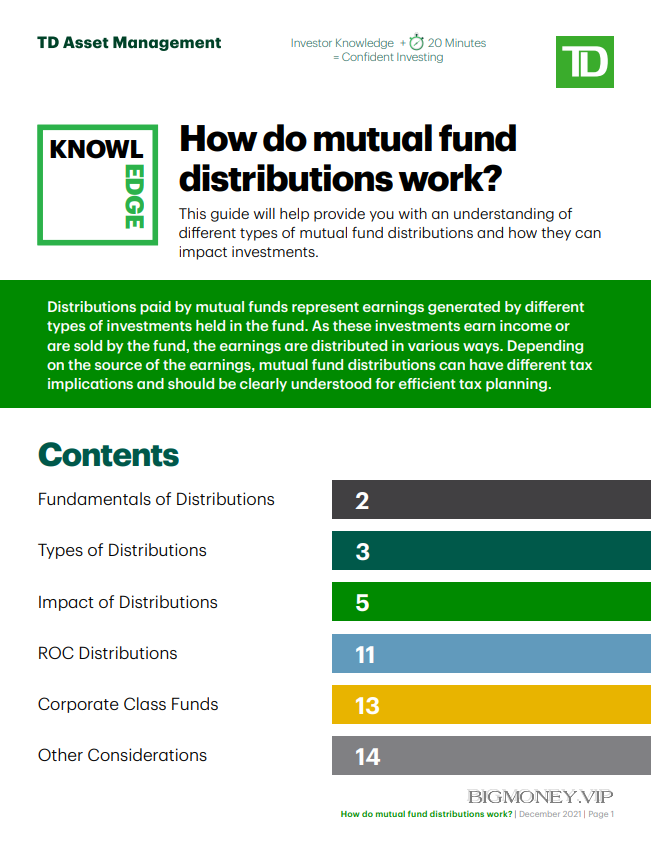How do mutual fund distributions work?

Distribution Fundamentals
Q: What is a distribution?
A mutual fund distribution represents the
earnings of a fund being passed on to the
individual investor or unitholder of the fund.
Q: How often are distributions made?
The frequency varies by the specific fund –
distributions can be paid monthly, quarterly or
annually.
Q: Why do mutual funds make
distributions?
Earnings retained by a mutual fund are
generally subject to tax at the highest marginal
rate. Distributions received by individual
investors are taxed at their own marginal
tax rates, which may be lower than the rate
applicable to the fund.
Q: How are distributions calculated?
Distributions are allocated to unitholders in
proportion to the number of units they hold on a
specific date, known as the “record date”.
Example: If you held 100 mutual fund units
on the record date, and the distribution was
$0.50 per unit, you would receive a taxable
distribution of $50.
Q: Are distributions made for a
set amount?
While some mutual funds have a target or
fixed distribution, the sustainability of the fixed
distribution is based on market performance.
As a result, a fund may change the distribution
amount without notice.
Note
The different types of distributions that are discussed in this guide include interest income,
Canadian dividend income, capital gains, return of capital and foreign income.
Types of Distributions




